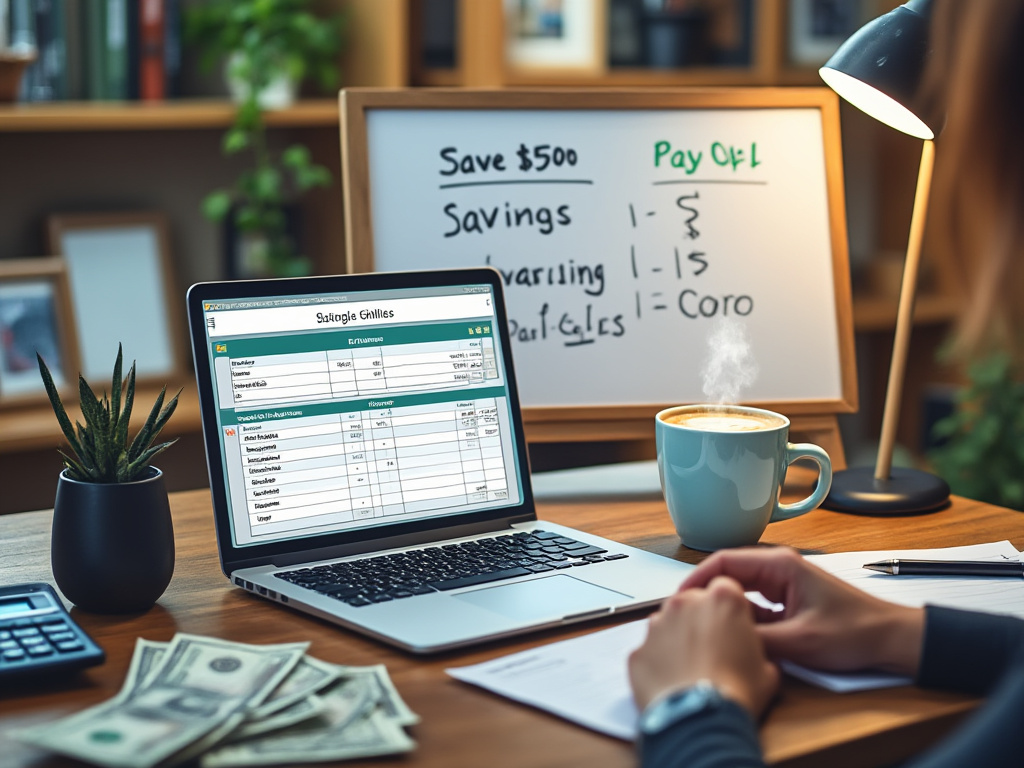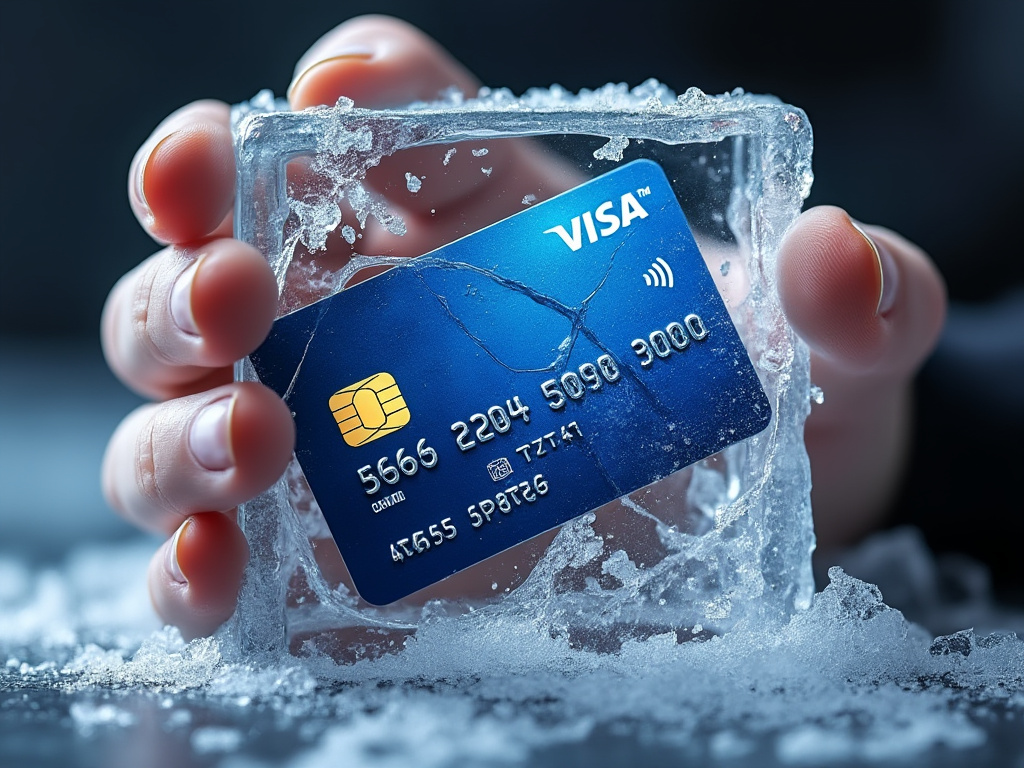A Step-by-Step Guide
Introduction
Credit card debt can be overwhelming, especially with high-interest rates compounding balances each month. However, with discipline and a structured plan, you can stop accumulating debt, develop an effective repayment strategy, and reclaim financial freedom. This guide will walk you through actionable steps, real-life scenarios, and tools to set yourself up for success.
1. Stop Using Your Credit Cards Immediately
The first critical step toward debt freedom is to stop adding to the debt. Continuing to use credit cards while trying to pay them off is counterproductive and will keep you stuck in a vicious financial cycle.
Steps to Take:
- Remove Temptation: Leave credit cards at home or freeze them physically (literally, in a block of ice). This makes impulsive spending more difficult.
- Switch to Cash or Debit: Stick to a cash budget or debit card for daily purchases, as this encourages mindful spending.
- Unsubscribe from Marketing Emails: Turn off shopping notifications and unsubscribe from promotional emails to reduce the temptation to spend.
Real-Life Example:
Jessica’s Shopping Addiction: Jessica had accumulated $12,000 in credit card debt, primarily from online shopping. Every time she saw a sale, she’d swipe her card. After unsubscribing from marketing emails and switching to cash payments, Jessica slashed her monthly spending by 40%. By simply controlling her urges, she could funnel more money toward debt repayment.
Key Insight: Eliminating credit card use is essential to break the debt cycle. Small behavioral changes, such as freezing your cards or setting cash limits, can have a significant impact on spending habits.
2. Understand Your Debt: Create a Debt Overview
To get control over your debt, you need to know exactly how much you owe. Creating a clear debt overview will allow you to strategize and stay focused on paying down your balances.
Steps to Take:
- List Every Debt: Include balances, interest rates, and minimum payments for all cards.
- Calculate Your Total Debt: Add up all your outstanding balances to see the full amount you need to pay off.
- Identify High-Interest Cards: Focus on the debts with the highest interest rates—these are costing you the most over time.

Real-Life Example:
Chris’s Reality Check: Chris avoided looking at his credit card balances for years. When he finally made a spreadsheet, he discovered he had $18,000 spread across six cards, with rates as high as 28%. Armed with this knowledge, he prioritized paying off his highest-interest cards first, saving hundreds in interest over time.
Key Insight: Creating a debt overview eliminates the fear of the unknown and gives you the clarity needed to build an effective repayment plan.
3. Develop a Repayment Strategy
Once you’ve stopped adding to your debt and have a clear picture of your obligations, it’s time to pick a repayment strategy. Choose the approach that aligns with your personality and financial goals.
Snowball vs. Avalanche Method Comparison:
| Method | How It Works | Best For | Example |
|---|---|---|---|
| Debt Snowball | Pay off the smallest debt first, then move to the next. | People who need motivation from small wins. | Lisa cleared a $500 balance first, boosting her confidence to tackle bigger debts. |
| Debt Avalanche | Pay off the highest-interest debt first. | Those looking to save the most on interest. | Chris started with his 28% card, avoiding extra interest fees. |
Steps to Take:
- Pick a Strategy: Decide between the snowball or avalanche method based on what motivates you.
- Make Extra Payments: Pay more than the minimum to reduce the principal faster.
- Track Your Progress: Use a spreadsheet or app to monitor your debt reduction journey.
Key Insight: Both methods are effective—choose the one that aligns with your personal psychology and financial situation.
4. Negotiate Lower Interest Rates or Consolidate Your Debt
High-interest rates make it difficult to pay off debt efficiently. Negotiating better terms or consolidating your debt can save you time and money.
Steps to Take:
- Negotiate Lower Rates: Contact your credit card companies and request a reduced interest rate.
- Consider a Balance Transfer: Look for cards with 0% APR offers for 12–18 months to reduce interest temporarily.
- Explore Debt Consolidation: Combine multiple debts into a single loan with a lower rate.
Real-Life Example:
Mark’s Negotiation Success: Mark’s 24% interest rate was draining his finances. After calling his credit card provider, they agreed to lower his rate to 15%. He also transferred another balance to a 0% APR card, giving him 18 months to pay it off without accruing new interest.

5. Cut Unnecessary Expenses and Boost Your Income
The more money you can direct toward debt repayment, the faster you’ll see progress. This requires trimming non-essential expenses and finding ways to increase your income.
Steps to Take:
- Create a Lean Budget: Identify areas where you can cut back, such as entertainment or dining out.
- Sell Unused Items: Use platforms like Facebook Marketplace to sell old electronics or clothes.
- Boost Your Income: Pick up a side gig or freelance work to generate extra cash.
Real-Life Example:
Tom’s Side Hustle Strategy: Tom cut $200 from his monthly expenses by canceling streaming subscriptions and eating at home. On weekends, he earned $500 driving for DoorDash. Within six months, he used these savings and earnings to pay off $4,000 in debt.
Key Insight: Cutting costs and increasing income accelerates debt repayment, helping you become debt-free faster.
6. Build an Emergency Fund to Avoid Future Debt
An emergency fund provides a financial cushion, so you won’t rely on credit cards when unexpected expenses arise.
Steps to Take:
- Start Small: Save $500–$1,000 for emergencies like car repairs.
- Build a Larger Fund: After paying off your debt, save 3–6 months’ worth of living expenses.
- Automate Savings: Set up automatic transfers to grow your fund consistently.
7. Stay Committed and Track Your Progress
Staying motivated during the debt repayment process is essential. Tracking your progress will help you stay focused and celebrate your wins.
Steps to Take:
- Celebrate Milestones: Reward yourself for reaching significant milestones, like paying off a credit card.
- Use Budgeting Apps: Track your payments and expenses with apps like Mint or YNAB.
- Avoid Old Spending Habits: Once debt-free, continue following a budget to prevent relapse.
Real-Life Example:
Mike’s Debt-Free Celebration: Mike tracked every $500 payment in his spreadsheet and celebrated each milestone with small rewards, like a movie night. After a year, he paid off $7,000 and planned a debt-free vacation to celebrate.
Conclusion
Getting out of credit card debt requires discipline, but it’s entirely achievable with the right approach. Stop using your cards, choose a repayment strategy, and commit to boosting your income while cutting unnecessary expenses. Build an emergency fund to avoid future debt, and track your progress to stay motivated. Every small step brings you closer to financial freedom.
Call to Action:
Start today by listing your debts and choosing a repayment strategy. The sooner you begin, the faster you’ll achieve the debt-free life you deserve.
Discover more from Articles Of AI
Subscribe to get the latest posts sent to your email.

